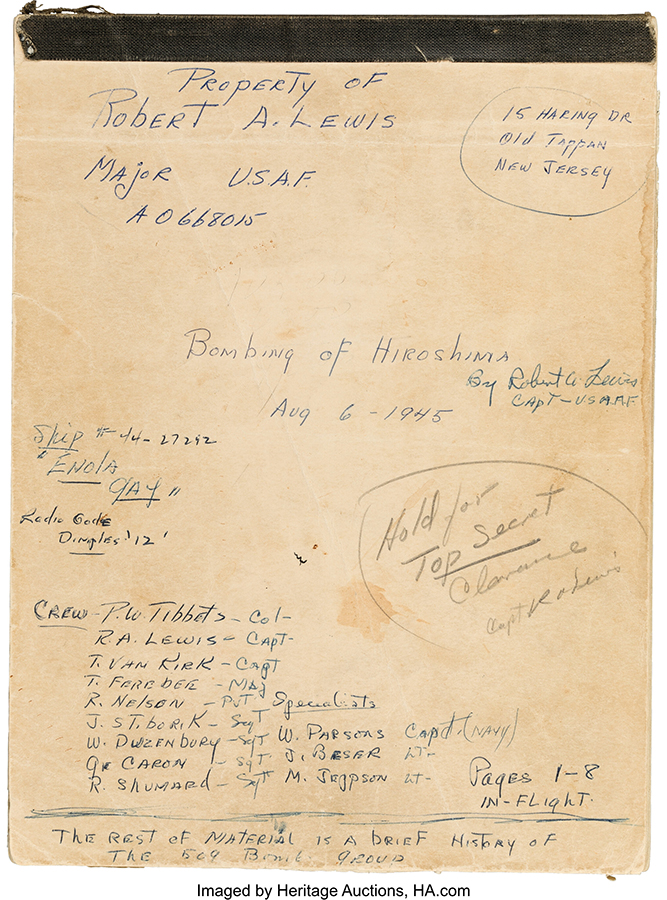
By Jim O’Neal
Air Force General Curtis LeMay landed on Guam Island on Jan. 7, 1945. He had been transferred there specifically to assume command of the 21st Bomber Command and lead the effort to force Japan to surrender. One of the younger generals in the Army, he constantly chewed a cigar butt to help mask a nerve disorder that made his mouth droop. Thought to be Bell’s palsy, it was probably the result of flying high-altitude bombing missions over Europe.
He was one of the first to abandon the tactic of precision bombing designed to minimize collateral damage to nonmilitary targets and noncombatants. In response to a question, his caustic reply was “I’ll tell you what war is about. You’ve got to kill people, and when you’ve killed enough, they stop fighting.”
In May 1864, during the American Civil War, General William Tecumseh Sherman said something similar. After burning Atlanta during his infamous March to the Sea, he declared, “War is cruelty. There is no use trying to reform it. The crueler it is, the sooner it will be over.”
General Sherman was convinced that the Confederacy should be defeated by the complete destruction of both its military and civilians’ ability to wage war. In his March to Savannah, he cut a wide swath destroying cities, plantations, livestock and crops. His intent was to break the spirit of everyone and everything that stood in his way. Today his name provokes animosity in the South for his cruel, wanton destruction, despite the fact that it helped bring the war to a conclusion.
With General LeMay now in Asia, the primary question involved how to convince Japan that surrender was the most prudent decision. The American military had fought their way across the Pacific Ocean to Japan’s doorstep, defeating Japanese troops on a series of islands with strange names like Saipan, Guadalcanal, Corregidor, Tarawa, Iwo Jima and, finally, Okinawa. The Battle of Okinawa’s initial invasion on April 1, 1945, was the largest amphibious assault in the Pacific Theatre of World War II. The 82-day battle lasted until June 22, 1944. The Allies intended to use the air base for Operation Downfall, the invasion of the Japanese home islands.
However, the battles in the Pacific had been bloody. The capture of Iwo Jima, less than 8 square miles of volcanic ash, had cost the lives of 25,849 Marines (one-third of the landing force). Okinawa’s price was 49,151, and kamikazes diving from the sky had sunk 34 U.S war ships and damaged an additional 368. If the Japanese could draw that much blood on the outer islands of their defense perimeter, how formidable would they be on the 142,000 square miles on their five home islands? The Joint Chiefs had estimated a minimum of 1 to 2 million deaths in a full assault.
When LeMay assumed command, he implemented the strategic bombing concept that had been so successful in defeating Germany. He also added two new technologies that seemed tailor-made for use against Japan’s predominantly flammable cities. The first was a highly efficient 6-pound incendiary bomblet developed by Standard Oil: the M-69 projectile. It spewed burning gelatinized gasoline that stuck to the ubiquitous wooden houses. The second was the B-29 Superfortress, a long-range, intercontinental bomber. Soon LeMay had 350 bombers parked in the Marianas, with more arriving every day. The 11-man crew bomber had a range of 4,000 miles at 35,000 feet. Importantly LeMay had perfected the optimum mix of explosives and incendiary bombs that resulted in firestorms that evolved into virtual thermal hurricanes that killed by heat suffocation.
The first raid consisted of 344 bombers that crisscrossed a target area and then merged into a sea of flames. They left 1 million homeless and 90,000 dead. In the ensuing five months, LeMay’s bombers attacked the 66 largest Japanese cities, killing 900,000 citizens. In addition, 1.3 million were injured, and 8 million houses were destroyed. Hiroshima and Nagasaki were intentionally spared.
Every Japanese citizen took a sacred vow to fight until the last person was dead.
They spent their time constructing 9,000-plus high-altitude incendiary bombs to float across the Pacific Ocean, using the strong trade winds, and drop them on the West Coast of the American mainland. Japanese schoolgirls labored to assemble the balloon bombs. An Oregon family of six were the only American mainland casualties of the entire war.
Meanwhile, Air Force Colonel Paul Tibbets went to Omaha to hand-pick his B-39 #82 off the production line of Glenn Martin. He renamed it Enola Gay, his mother’s name, and got it back in theater ready to go. President Harry Truman was at sea, returning from Potsdam. On Aug. 6, the White House issued a statement: “16 hours ago an American airplane dropped an atomic bomb on Hiroshima … harnessing the power of the Universe.”
Still the Japanese refused to surrender.
Only on Aug. 10, a day after a second nuclear explosion had devastated Nagasaki, killing an additional 70,000 people, did Japanese experts agree that their country was under an atomic attack. Emperor Hirohito recorded an announcement that was broadcast on the radio.
Most Japanese citizens had never heard his voice before.
This particular war was ended.
 Intelligent Collector blogger JIM O’NEAL is an avid collector and history buff. He is president and CEO of Frito-Lay International [retired] and earlier served as chair and CEO of PepsiCo Restaurants International [KFC Pizza Hut and Taco Bell].
Intelligent Collector blogger JIM O’NEAL is an avid collector and history buff. He is president and CEO of Frito-Lay International [retired] and earlier served as chair and CEO of PepsiCo Restaurants International [KFC Pizza Hut and Taco Bell].
